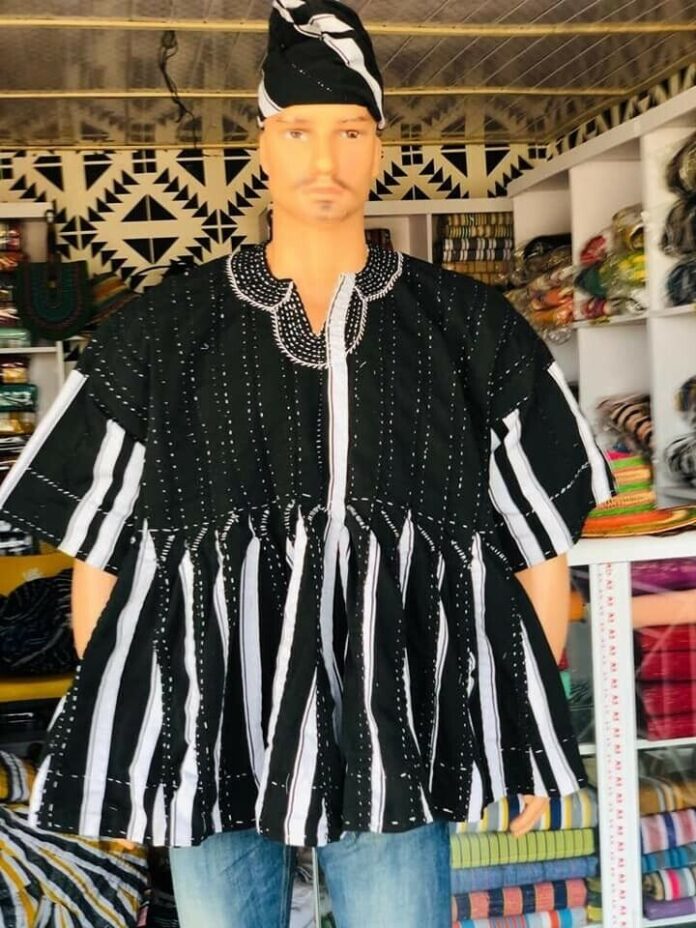The Northern Smock: Ghana’s Proud Symbol of Identity and Heritage
Ghana’s diverse culture is beautifully reflected in its traditional wear, and one of the most iconic garments from the north is the smock, popularly known as “fugu” in Dagbani or “batakari” in Akan. Worn with pride across regions, the smock stands as a powerful symbol of heritage, resistance, and dignity.
A Brief History of the Northern Smock
The smock originated among the people of Northern Ghana particularly the Dagombas, Mamprusis, Nanumbas, Frafras, and Kusasis. Originally worn by warriors and elders, the smock was once considered a symbol of strength and authority. Historically, smocks were worn in battle, often believed to have protective spiritual powers when infused with amulets or talismans.
Over the years, the smock has moved beyond its martial roots to become a national fashion statement.
Read also EFFORTLESS STYLE: FASHION TIPS FOR EVERY DAY CONFIDENCE
Design and Craftsmanship
The smock is made from handwoven strips of cotton, known locally as “strip cloth.” These strips, usually about 4 inches wide, are sewn together to create a richly textured fabric. The patterns are mostly vertical, with bold, contrasting colors like black, white, blue, and brown.
Men’s Smocks: Wide-necked and roomy, often paired with trousers and a matching hat.
Women’s Smocks: Recently gaining popularity, women’s versions are tailored into dresses, tops, and even skirts.
Each smock is unique, and its style may differ slightly from tribe to tribe.
Cultural and Social Significance
The Northern smock is more than a piece of clothing it’s a badge of identity:
Ethnic Pride: Wearing a smock is a way to honor one’s Northern roots.
Status & Ceremony: Chiefs, traditional leaders, and elders wear embroidered or oversized smocks for events such as enstoolment, festivals, and royal gatherings.
Unity & Recognition: Politicians and public figures from the north wear the smock to promote inclusivity and celebrate cultural heritage, especially on occasions like National Smock Day (celebrated on the first Friday of every year in March).
When Is the Smock Worn?
Festivals (e.g. Damba, Bugum Fire Festival)
Traditional weddings & funerals
Naming ceremonies
Independence Day celebrations
Graduations and official ceremonies
Thanks to its growing popularity, it’s now also worn at church services, Friday prayers, and even casual Fridays in some urban workplaces.
Modern Appeal and Global Recognition
Today, the smock is no longer confined to the north. Fashion designers across Ghana and the diaspora are experimenting with smock fabric in jackets, bags, footwear, and dresses. Celebrities and global figures have also worn the smock as a sign of solidarity and admiration for Ghanaian culture.
Notable personalities, including former President John Mahama and current Vice President Dr. Mahamudu Bawumia, often appear in smocks during public events, giving the garment even greater visibility.

Challenges and the Future
While the demand for smocks has grown, the craft is still largely dependent on traditional weavers in rural areas. Preserving the skill and encouraging youth to learn the art of smock weaving is essential for sustaining the industry.
Opportunities for growth include:
Creating training programs for young artisans
Exporting smock-based fashion
Promoting eco-friendly cotton production in the north
Wearing Heritage with Pride
The Northern smock is a powerful example of how fashion and culture intersect. It represents the strength, dignity, and beauty of the Ghanaian north and has become a nationwide symbol of identity and pride.
Whether worn by a chief in Tamale, a graduate in Accra, or a designer on an international runway, the smock tells a story of Ghana’s unity in diversity.
Next time you wear a smock, remember you’re not just putting on a garment. You’re wrapping yourself in the legacy of Ghana’s northern soul.




